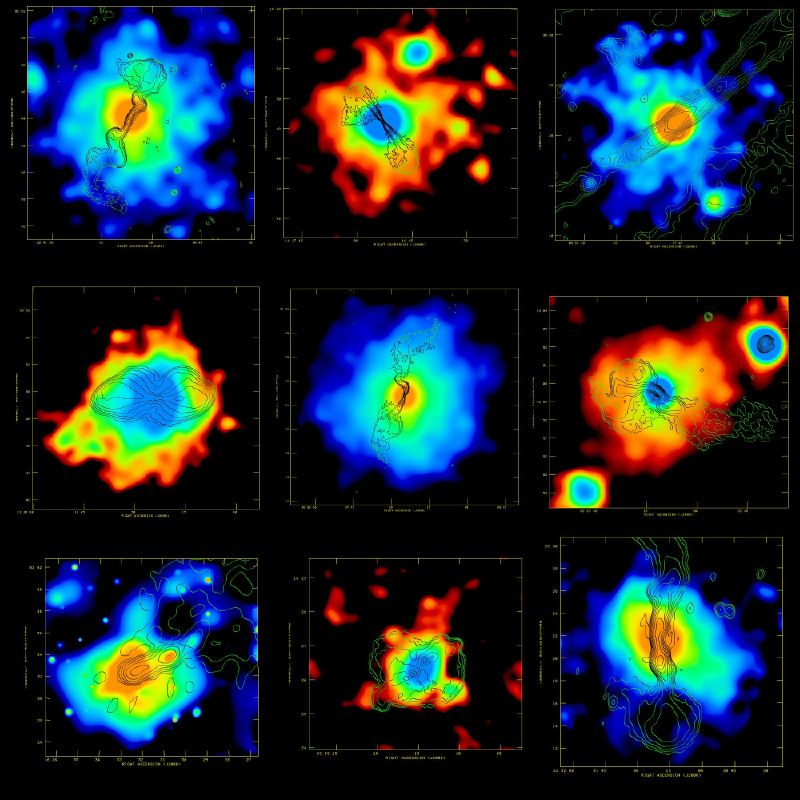
 Credit: J.H. Croston (University of Hertfordshire, UK) and ESA
Credit: J.H. Croston (University of Hertfordshire, UK) and ESA
No Static at All
If you wander around the FM dial, you might find the most interesting stuff from low-power radio stations. Low power stations offer insights both mundane and bizarre, but almost always reflect their localities in important ways. This principle might not be Universal, however. A new study of "low power" radio galaxies (so-called Fanaroff-Riley type I galaxies, FR-I) compared their radio emission with their X-ray emission to look for correlations. The image above shows nine such galaxies as observed in X-rays with XMM-Newton (in color) with radio contours (from various radio telescopes) superimposed. These galaxies cover a range in X-ray luminosity of more than a factor of 100, with little correlation between the X-ray and radio properties. This study suggests that the evolution of the radio source (which is associated with a supermassive black hole at the center of these galaxies) cannot be determined entirely by the global properties of the hot, X-ray emitting gas associated with the FR-I galaxy.
Published: September 15, 2008
<
HEA Dictionary ● Archive
● Search HEAPOW
● Other Languages
● HEAPOW on Facebook
● Download all Images
● Education ● HEAD
>
Each week the HEASARC
brings you new, exciting and beautiful images from X-ray and Gamma ray
astronomy. Check back each week and be sure to check out the HEAPOW archive!
Page Author: Dr. Michael F. Corcoran
Last modified Monday, 26-Feb-2024 17:10:39 EST


